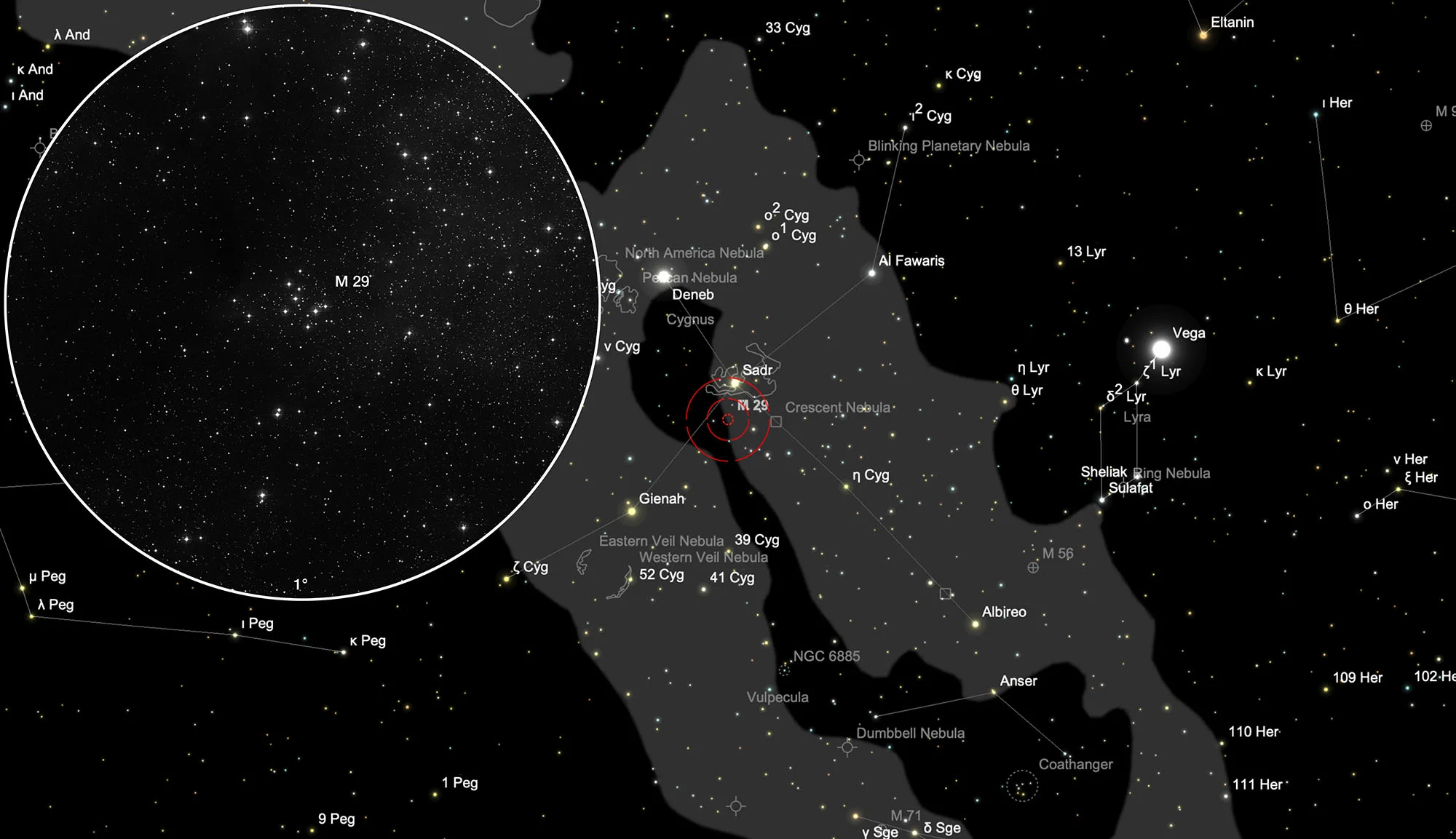Open Cluster Messier 29

Object Description
This small and rather inconspicuous open star cluster was discovered by Charles Messier in July 1764. It is located in an area of the Milky Way with high levels of dust, which causes a darkening of around 3 magnitudes. W. A. Hiltner found out in 1954 that the density of the dust within the cluster was about a factor of 1000 above the galactic mean. The brightest members are all B-type stars. The stellar population resembles the much closer cluster M 36 in Auriga. [4]
The removal of M 29 is described in the «Catalogue of Open Cluster Data (COCD)», Kharchenko et al. 2005 [257] with 1148 pc (3744 ly) and the age with logt = 7.12 (107.12 ≈ 13 million years). Similar values are found in WEBDA [138].
| Designation | NGC 6913 |
| Type | OCL (III3p) |
| Right Ascension (J2000.0) | 20h 24m 06.0s |
| Declination (J2000.0) | +38° 29' 36" |
| Diameter | 10 arcmin |
| Visual magnitude | 6.6 mag |
| Metric Distance | 1.148 kpc |
| Dreyer Description | Cl, P, lC, st L and S |
| Identification, Remarks | h 2078; GC 4576; M 29; OCL 168 |
Finder Chart
The open cluster M 29 is located in the constellation Cygnus. The best observing time is March to December.
Visual Observation
300 mm Aperture: Messier 29 is an unspectacular group of about eight somewhat more conspicuous stars. — 300 mm f/4 Popp-Newton, Hasliberg, SQM 20.9, 18. 10. 2025, Bernd Nies
